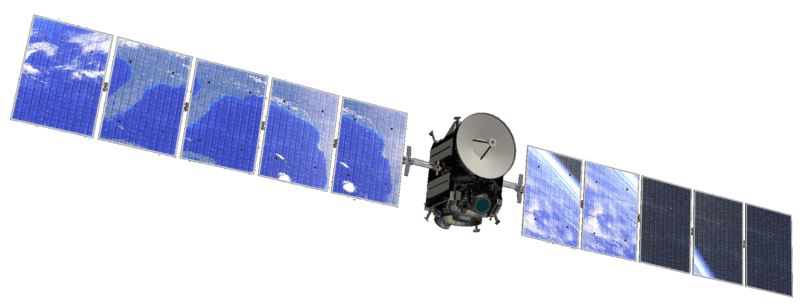NASA scientists say that we are about to loose our favourite Dawn spacecraft that has been studying the Asteroid Belt largest objects Ceres and Vesta for the past 11 years. In the next few weeks Dawn will run out of fuel needed to keep the spacecraft’s antennas pointed to the Earths and instruments to the target. When it happens, Dawn will not be able to do any more science or talk to the ground control. It will continue silently orbiting the dwarf planet Ceres for quite some time, possibly for the next twenty years.
Why asteroids?
Ceres and Vesta are so very different form each other that it is hard to believe they both reside in the same area, called the Asteroid Belt, between the orbits of Mars and Jupiter. Vesta is a planets-like rocky asteroid over 500 kilometers across. Ceres, which is about twice as big, is an icy dwarf planet.
Asteroids are primitive bodies, space bricks, that in time turned into planets and moons. They can tell us a story of the Solar System formation and explain what kind of conditions were there in its early years.
Mission timeline
2007, September 27 Launch
2009, February 18 Flyby of Mars (closest point)
2011, July 16 Entered orbit of Vesta
2012, September 04 Left orbit of Vesta
2015, March Entered orbit of Ceres
Our favourite Dawn spacecraft facts
-
It’s got a fantastic engine
Dawn uses ion propulsion rather than chemical propulsion. This technology was first tested on “Deep Space 1” mission to the asteroid belt. But Dawn is the first spacecraft to use ion drive not in a test, but in a real mission. It allowed the spacecraft to get into one celestial body’s orbit, maneuver, break free and move into the orbit around another target. Ion propulsion is very effective. It allows engineers to use less propellant and smaller launch vehicles! Maybe ion propulsion will help humans reach Mars one day!
-
It is the only multiple-target mission to orbit both target bodies
The previous multiple-destination missions (like “New Horizons” mission to Pluto and its future target Ultima Thule, “Voyager 1” to Jupiter, Saturn and Titan, “Voyager 2” to Jupiter, Saturn, Uranus and Neptune) only flew past their targets!
-
It can take a really close look at the surface
Dawn is currently orbiting dwarf planet Ceres, its orbit takes the spacecraft as close as 35 kilometers to the surface. That allows the spacecraft to use one of its really cool instruments called gamma ray and neutron detector, or GRaND, built by engineers from Los Alamos National Lab (Are you thinking what I am thinking? Yep, Manhattan Project! )
This instrument detects particles that bounce off the asteroid’s surface after it’s been hit by cosmic rays. By comparing the GRaND measurements with the models (of how cosmic rays would have bounced off different types of surfaces), scientists can figure out the dwarf’s surface composition. Clever!
-
It made lots of amazing discoveries and confirmed some or our theories
…about Vesta
Dawn spacecraft studied Vesta’s surface features, especially its two huge craters that formed long ago when Vesta collided with another space object. The material ejected during the impact added more rocks to the Asteroid Belt. It is also responsible for a certain type of meteoroids found on Earth.
…about Ceres
Dawn’s pictures revealed surface deposits on Ceres, that turned out to be epsom salts. The presence of these deposits indicates that in the recent past there was a subsurface ocean that froze leaving the salts exposed. Maybe the water is still there, under the ice? Organic molecules were also found in a few places on the surface of Ceres. But where these molecules came from and whether they have anything to do with life remains unclear.
Planning a lesson about asteroids?
Feel free to use the Small bodies of the Solar System lesson plan and other useful resources listed on our inflatable planetarium website.

